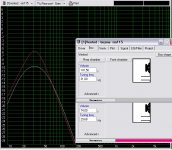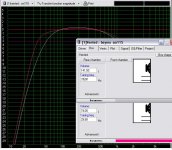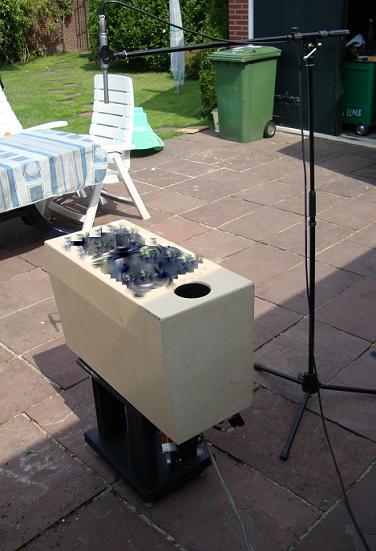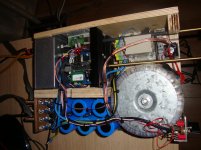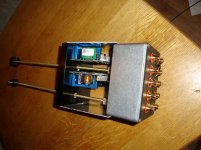Probably I am selling my horns for CP380 with wood stand at 100 euro + shipping.
http://www.audiodesignguide.com/HiEff/horn11.jpg
The new project with the new drivers is incredible, never ear before this sound.
The female voices are better than my reference 3 with 7" hi-end mid-woofer.
The bass frequency are very fast.
I suggest this project to any single ended lover.
Also the Glisdome run good!
How much power does your single ended amplifier produce Andrea?
Regards Helmuth
To driver these loudspeakers in a medium room a 2a3 pse with 5-6w is enough to produce good level.
Actually I don't have a 2a3 PSE or 300b SE to make a test.
Now I am using my 813/GM70 SE amp. and the level is enough to move the floor.
Actually I don't have a 2a3 PSE or 300b SE to make a test.
Now I am using my 813/GM70 SE amp. and the level is enough to move the floor.
To driver these loudspeakers in a medium room a 2a3 pse with 5-6w is enough to produce good level.
Actually I don't have a 2a3 PSE or 300b SE to make a test.
Now I am using my 813/GM70 SE amp. and the level is enough to move the floor.
With 6W every dB of your speaker counts.
After my Horn almighty project I wanted to reproduce at 102dB 1wmtr down to 35 Hz based on Simulation.
It did down to 45Hz and I missed sub-bas and due the back-loaded horn principle the mid range was to restless to listen to.
So I dicided to build a speaker with good sensitivity down to 30Hz. I can not say it with 100% accuracy but it will do 92-93dB 1Wmtr very flat response extreme low distortion of the high frequencies. and perfect phase response.
The point a want to make is that with not going to extreme with sensitivity rating it is easier to reach the goals.
So by sacrifice 3 dB real sub-bas. And how will that sound compared to a loud speaker with more sensitivity and no sub bas. My self i increase the spl level to experience more bas by lack of sub-bas.
So the point I want to make here when listing pop music the higher efficiency with less sub-bas doesn't get you further.
It is only 3dB / 3dB more with out subbas/ 3db less better linear behaviour and sub-bass.
6W = +7,78dB 10W=+10dB 12W= +10.97dB this level has to added to the spl-level at 1Wmtr. So you can see above 10W the power contributes less then in the few watts where efficiency plays a large roll.
Last edited:
The woofer SM115N is the best compromise, low resonance frequency (29Hz) and high sensibility (97-98dB).
Other woofer have high sensibility (99-100dB) but higher frequency resonance.
Other woofer have high sensibility (99-100dB) but higher frequency resonance.
Funny I started a ru29 PP triode project but got distracted and I am at the moment listening to a class D amp 2X180 4ohm with 500VA transformer and 24step volume control. I needed that to have a reference measuring amp.Now I am using my 813/GM70 SE amp. and the level is enough to move the floor.
I did hear the class D on a few magnepans sounded very good and the owner is a formal manufacturer of custom made tube-amps. And switched from triode pp to class D without a problem. I hear a very natural sounding amp.
http://www.hypex.nl/docs/UcD180HG_datasheet.pdf
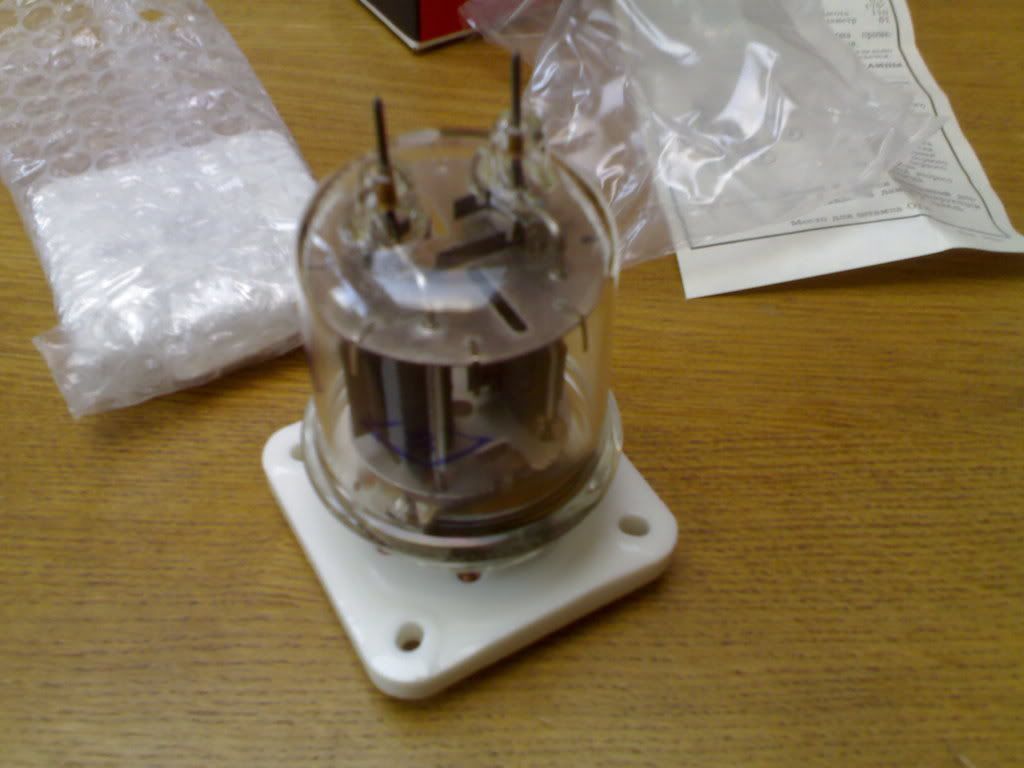
To go back to my previous post. When you got 10W or more a sensitivity of 90 and higher will give 100dB max if that goes deep enough is quite impressive. And one doesn't need that high efficiency.
My PP project with ru29 will produce 10-12W. Good value to work with on reasonable efficient drivers.
Last edited:
The woofer SM115N is the best compromise, low resonance frequency (29Hz) and high sensibility (97-98dB).
Other woofer have high sensibility (99-100dB) but higher frequency resonance.
The beyma sm115n is definitely a winner what concerns spl in combination with low extension.
It starts to fall off quickly 80hz but it falls of very slow so it is efficient even at 40Hz. port gain is at -10db. You know it is at the limit what 1 driver in a br can do.
Here a comparison with the drive i use it is straight down to 30 Hz with port gain -8db at 22hz spl91dB. And flat response in the hole range.
Here a measurement I will do better ones with the new amp. You can see the port tuning at 30Hz that due the position of the mic when measured.
170msec window openfield speakers to heaven.
(+2 and -2 dB but I have to measure again though. Even without smoothing)
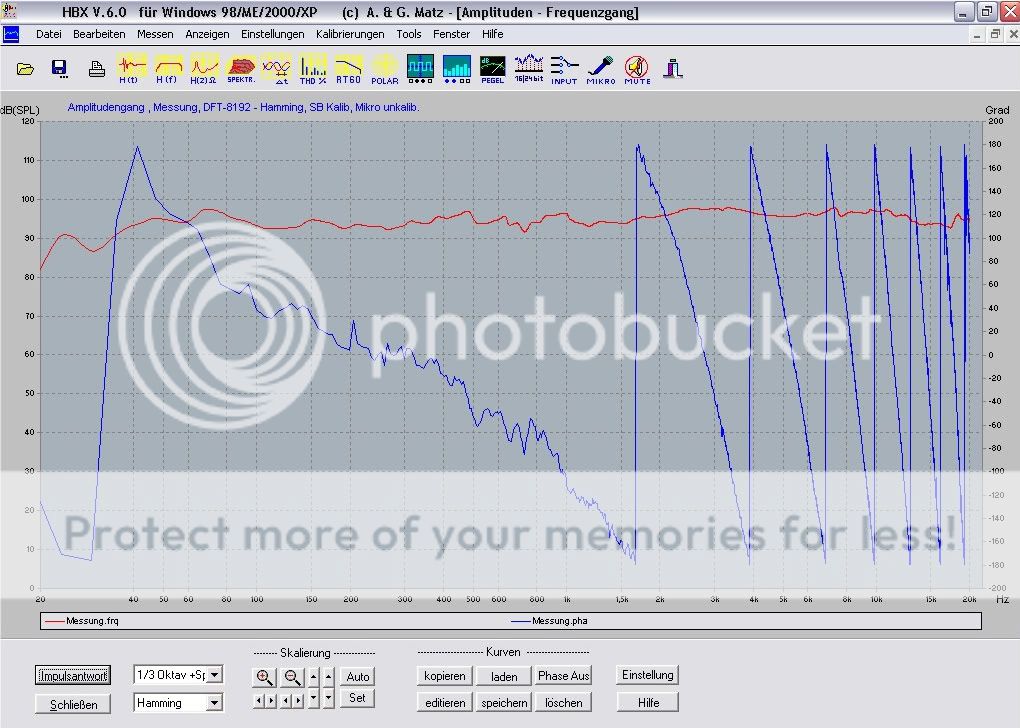
Zoom in 20msec window open field.
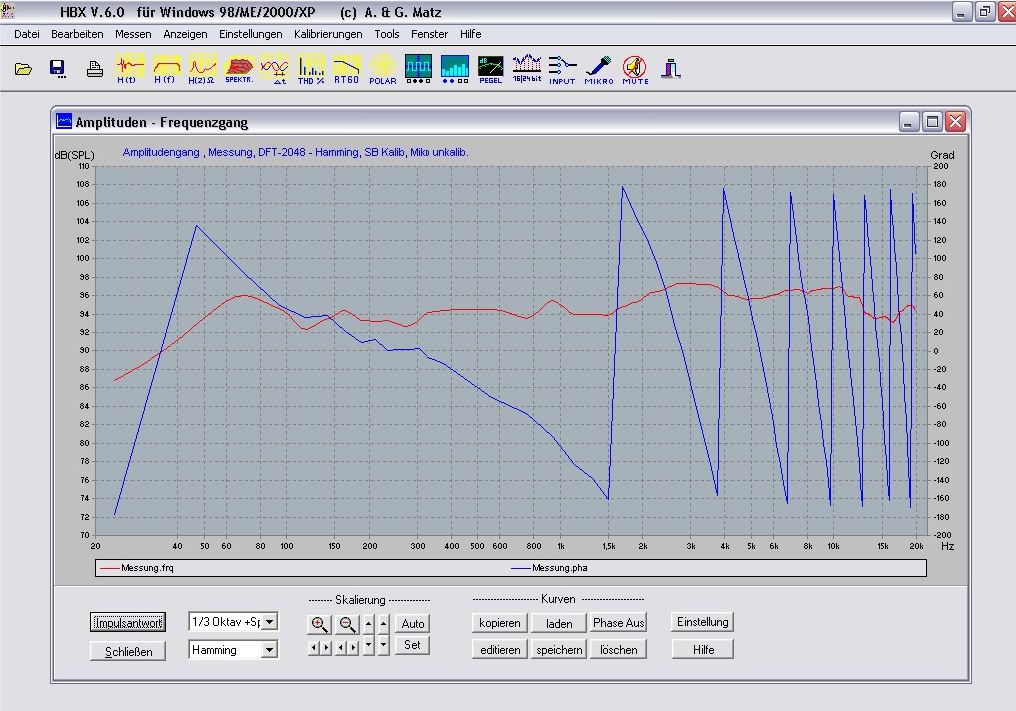
With the beyma you definitely found one of the best on the market. But the high efficiency has its down side in the midrange.
It would a very good concept when you suppress the level above 40hz 4dB then it would be flat to about 30Hz with 93dB 1wmtr and it would create 4dB space 🙄 to flatten the midrange of the sm115n.Spl enough.
Regards helmuth
Attachments
Last edited:
Looks like a lot of work andrea

What did you think about the sound-quality compared to the tube amp.
The class d amp is absolute silent in this configuration only with my ear at the cone a light noise is audible. I modded the amplification of the ucd from 11dB to 22dB and placed a LME49720.
Attachments
Last edited:
Class D or Vacuum tube amps. ? The first are trush
To increase the sonic performances try MKP bypass like in my project (no less than 22uF)
Cheap hi-end system
In my last test with ESL the simple Albarry amplifier was better than any class D amp.
Albarry
P.S.
In all my sonic performance tests I always search to be sure of an objective result using many persons and these with different experiences.
This mean that the result here is not my personal and it is not subjective like many other test published online.
To increase the sonic performances try MKP bypass like in my project (no less than 22uF)
Cheap hi-end system
In my last test with ESL the simple Albarry amplifier was better than any class D amp.
Albarry
P.S.
In all my sonic performance tests I always search to be sure of an objective result using many persons and these with different experiences.
This mean that the result here is not my personal and it is not subjective like many other test published online.
Last edited:
Class D or Vacuum tube amps. ? The first are trush
To increase the sonic performances try MKP bypass like in my project (no less than 22uF)
Cheap hi-end system
In my last test with ESL the simple Albarry amplifier was better than any class D amp.
Albarry
trush? I believe you mean trash.
I like tube amps to only I think a the class D amp is high value and one can only down grade with a amp that produces more THD like a tube amp.
And that people like even harmonic distortion to increase fidelity.
The positive side of the de ucd is the load independent low distortion and high current drive great for good impulse behaivour. When the class D doesn't sound good check the speaker.
Here the magnepans where I firts hear the class D.
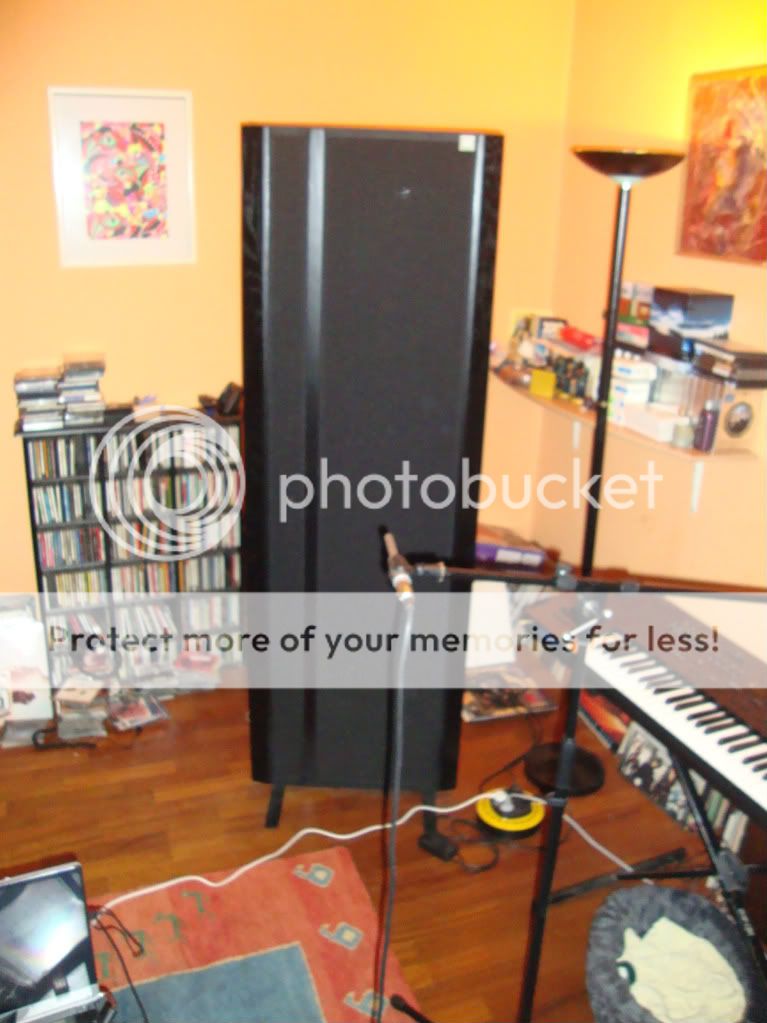
Here the stereo response on listening position very smooth and with loudness curve cause by the living room. Sounded great it can be a bit flatter then it would sound even better the bass was cool in some passages a bit to much.
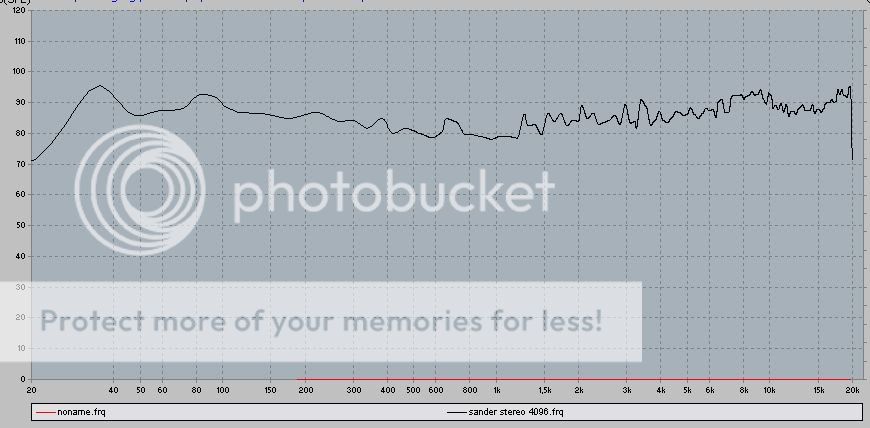
Last edited:
If you search "high current drive" see my new simple and cheap hybrid, 2 my friends prefer it to the 813 SE and PP2010.
Hybrid Amplifier by Andrea Ciuffoli
Hybrid Amplifier by Andrea Ciuffoli
Cool looking amplifier I like the design.If you search "high current drive" see my new simple and cheap hybrid, 2 my friends prefer it to the 813 SE and PP2010.
Hybrid Amplifier by Andrea Ciuffoli
I was planning also a hybrid for my ru29 only the other way around tube endstage solid state prestage the souces are also solid state only the turntable isn't when a tube pre is used.
Because thats what makes the tube sound transformer triode end stage no feed back or very little feedback that's what my amp will be about.
Your speaker measurements look very bad.
Even so bad that I think your not measuring the right way. I say what I think right in the face I do not want to insult your work in any way andrea. I did criticize it earlier the threat but it didn't improve.
I see in this plot about 15dB spl difference that can't be. It is probably the room.
Can you do a near field measurement of the woofer 10cm in front of the centre of the cone with a 20msec window.
All so of the beyma ribbon 10cm and a 6msec window.
The way I did outside with the radiation to heaven works great to eliminate reflections being measured. then even larger windows show a perfect result.
So you can see that the cone radiates linear, and what disturbance is caused by the baffle

Even so bad that I think your not measuring the right way. I say what I think right in the face I do not want to insult your work in any way andrea. I did criticize it earlier the threat but it didn't improve.
I see in this plot about 15dB spl difference that can't be. It is probably the room.
Can you do a near field measurement of the woofer 10cm in front of the centre of the cone with a 20msec window.
All so of the beyma ribbon 10cm and a 6msec window.
The way I did outside with the radiation to heaven works great to eliminate reflections being measured. then even larger windows show a perfect result.
So you can see that the cone radiates linear, and what disturbance is caused by the baffle

Last edited:
A 20 msec window means the border frequency is 1/20msec=50hz
To measure the cut of frequency you may increase to 40msec about 25Hz bottom limit.
To measure the cut of frequency you may increase to 40msec about 25Hz bottom limit.
Also with MLS are not easy the measurements in a normal room.
I am using 170ms (as you can see in the sreen shot) with the mic 1.5meters and I have a limitation to 44KHz samplifing frequency.
Any idea to get a best result ?
I am using 170ms (as you can see in the sreen shot) with the mic 1.5meters and I have a limitation to 44KHz samplifing frequency.
Any idea to get a best result ?
Will not comment on this thread however audiodesign's website was an inspiration for me with my 15" Hemp Coax Onken enclousure.
An externally hosted image should be here but it was not working when we last tested it.
Also with MLS are not easy the measurements in a normal room.
I am using 170ms (as you can see in the sreen shot) with the mic 1.5meters and I have a limitation to 44KHz samplifing frequency.
Any idea to get a best result ?
Hi andrea,
The advantage of mls is that you can measure in room.
The length of your measurement is the tool to eliminate the room influence. With frequency's above 800hz 1,25msec wave length 43cm you can do a measurement like in a anechoic room. then choose a small window 1,25msec. With lower frequency's it getting worse the best thing what one can do is measure as short as possible 20msec down to 50Hz.
When I do near field measurement in room with the mic 10cm from the driver with the window as short as possible you will get the best possible result. To see the response of the cone.
That I did explain in my previous post. A near field measurement to eliminate the reflection of the room and baffle.
The measurement open field with the box on its back shows the response of driver and baffle.
To measure in side a room, 170msec tells you what you hear in that room. But it tells me nothing about the performance of the speaker so as reader of your site I become non info about the performance of your speaker.
You can produce a precise response by measuring with the smallest gate. to show accurate high response. to show frequency's above 3 khz.
Then with a 5msec window the mid response. To show frequency's above 800Hz
And with a 20 msec window the low frequency. To show frequency's under 800Hz
Open these three pictures in windows paint. With window and copy function you paste the high response and mid response in the low response in the low response grafic.
Ten you have the most a reliable in room measurement. Combined out 3 mls measurements 20msec/5msec/2msec, 50-800hz/800-3000hz/3000-20000hz.
Last edited:
Will not comment on this thread however audiodesign's website was an inspiration for me with my 15" Hemp Coax Onken enclousure.
An externally hosted image should be here but it was not working when we last tested it.
Congratulations with these nice looking full-range onken Bambadoo.
- Home
- Loudspeakers
- Multi-Way
- Hi-End and Hi-Efficency loudspeakers (horn + onken)
